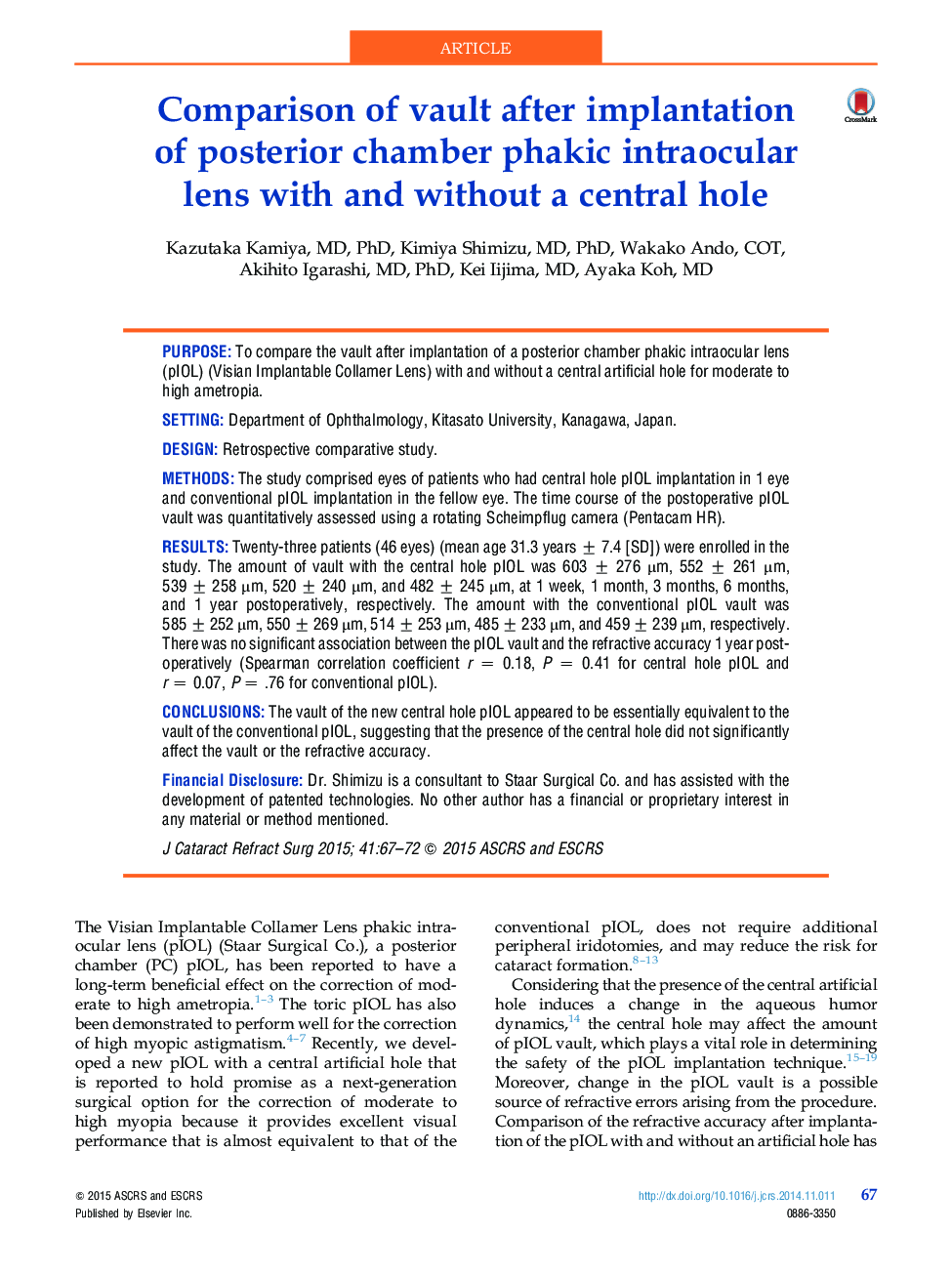| کد مقاله | کد نشریه | سال انتشار | مقاله انگلیسی | نسخه تمام متن |
|---|---|---|---|---|
| 4016317 | 1261945 | 2015 | 6 صفحه PDF | دانلود رایگان |
PurposeTo compare the vault after implantation of a posterior chamber phakic intraocular lens (pIOL) (Visian Implantable Collamer Lens) with and without a central artificial hole for moderate to high ametropia.SettingDepartment of Ophthalmology, Kitasato University, Kanagawa, Japan.DesignRetrospective comparative study.MethodsThe study comprised eyes of patients who had central hole pIOL implantation in 1 eye and conventional pIOL implantation in the fellow eye. The time course of the postoperative pIOL vault was quantitatively assessed using a rotating Scheimpflug camera (Pentacam HR).ResultsTwenty-three patients (46 eyes) (mean age 31.3 years ± 7.4 [SD]) were enrolled in the study. The amount of vault with the central hole pIOL was 603 ± 276 μm, 552 ± 261 μm, 539 ± 258 μm, 520 ± 240 μm, and 482 ± 245 μm, at 1 week, 1 month, 3 months, 6 months, and 1 year postoperatively, respectively. The amount with the conventional pIOL vault was 585 ± 252 μm, 550 ± 269 μm, 514 ± 253 μm, 485 ± 233 μm, and 459 ± 239 μm, respectively. There was no significant association between the pIOL vault and the refractive accuracy 1 year postoperatively (Spearman correlation coefficient r = 0.18, P = 0.41 for central hole pIOL and r = 0.07, P = .76 for conventional pIOL).ConclusionsThe vault of the new central hole pIOL appeared to be essentially equivalent to the vault of the conventional pIOL, suggesting that the presence of the central hole did not significantly affect the vault or the refractive accuracy.Financial DisclosureDr. Shimizu is a consultant to Staar Surgical Co. and has assisted with the development of patented technologies. No other author has a financial or proprietary interest in any material or method mentioned.
Journal: Journal of Cataract & Refractive Surgery - Volume 41, Issue 1, January 2015, Pages 67–72
